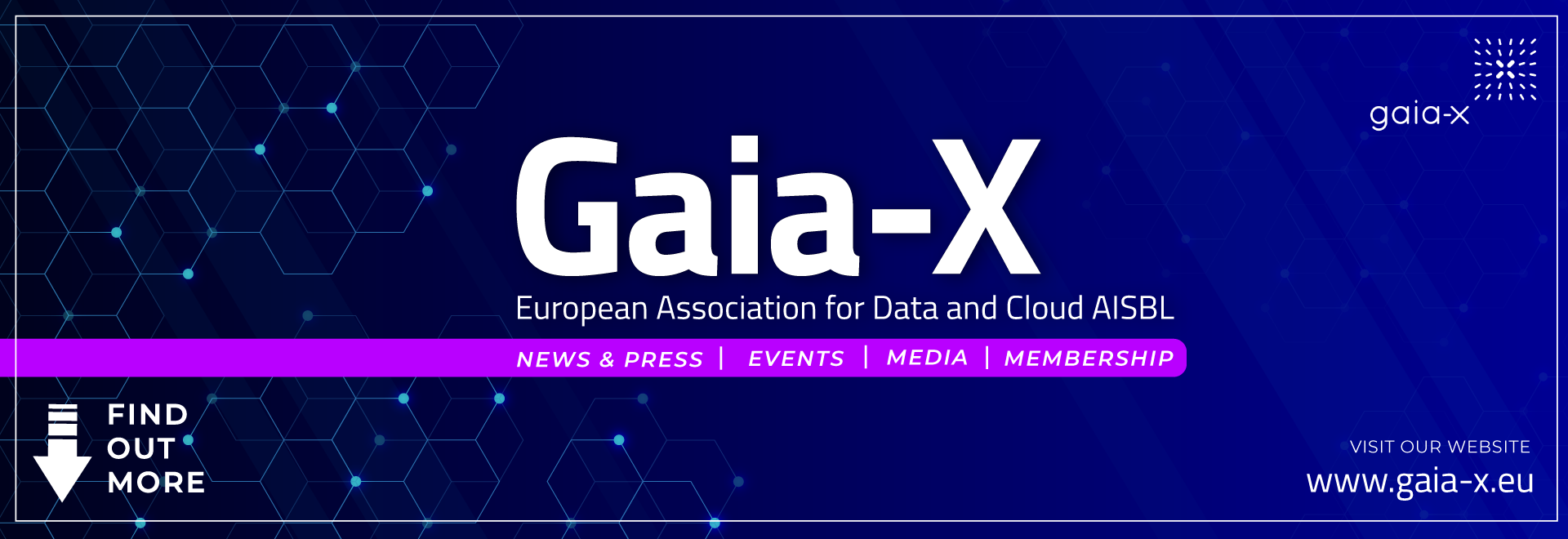- From: Yassir Sellami <yassir.sellami@gaia-x.eu>
- Date: Thu, 4 Jul 2024 06:08:57 +0000
- To: "xin-li1990@hotmail.com" <xin-li1990@hotmail.com>, "public-odrl@w3.org" <public-odrl@w3.org>
- Message-ID: <DU2P194MB16793A93AA8569504015CD92C1DD2@DU2P194MB1679.EURP194.PROD.OUTLOOK.COM>
Hello,
I am not familiar with the Open Data Contract Standard, thanks for sharing.
However, I do believe it is very close to what we are trying to do at Gaia-X you can find the ontology here<https://gaia-x.gitlab.io/technical-committee/service-characteristics-working-group/service-characteristics/ontology/gaia-x/ServiceOffering>.
In my honest opinion, it is sometimes necessary to traverse the graph, but it also depends on whether the policy needs to be technically enforced or just be a legally binding contract. Another possibility is to "flatten" the contract at the time of agreement/signature.
Another crucial point: signing the contract, this would make sure that it cannot be tampered with, and have a certain legal validity, for this we are using Verifiable Credentials which could also allow the Integrity of related resources<https://www.w3.org/TR/vc-data-model-2.0/#integrity-of-related-resources.> in that graph.
But I am also curious to know what the ODRL community think about this issue.
Please feel free to contact me if needed.
Regards,
Yassir Sellami | Software Developer
Gaia-X European Association for Data and Cloud AISBL
yassir.sellami@gaia-x.eu<mailto:yassir.sellami@gaia-x.eu> | www.gaia-x.eu<http://www.gaia-x.eu/> |
Avenue des Arts 6-9
1210 Bruxelles/Brussels
Belgium
[Gaia-X Signature Generic.png]<https://gaia-x.eu/>
News & Press<https://gaia-x.eu/news-press/> | Events<https://gaia-x.eu/events/> | Media<https://gaia-x.eu/media/>| Membership<https://gaia-x.eu/membership/> | www.gaia-x.eu<http://www.gaia-x.eu/>
PRIVACY AND CONFIDENTIALITY NOTICE: For details about what personal information we collect and why, please see our Privacy Policy on our website at http://www.gaia-x.eu/privacy-policy.
This e-mail message and any attachments are for the sole use of the intended recipient(s) and may contain confidential and/or legally privileged information. Any unauthorized use or disclosure, copying and/or distribution of the content of this e-mail message and attachments is prohibited. If you are not the intended recipient, please contact us by reply e-mail and destroy all copies of the original message and attachments immediately. Thank you.
Please consider the environment before printing this e-mail. Save about 200ml water, 2g CO2, 0.05kWh power, and 2g wood.
________________________________
From: Xin LI <xin-li1990@hotmail.com>
Sent: Wednesday, July 3, 2024 16:11
To: public-odrl@w3.org <public-odrl@w3.org>
Subject: Leveraging ODRL to represent data contracts
You don't often get email from xin-li1990@hotmail.com. Learn why this is important<https://aka.ms/LearnAboutSenderIdentification>
Hi, ODRL working group,
I am exploring the potential of leveraging ODRL to represent data contracts in a use case that my team is working on. The data contract I am dealing with is basically an agreement between data producer and data consumer that defines the following:
1.
Data use constraints
2.
Technical quality
3.
Service Level Agreement (SLA)
4.
......
In fact, I am taking inspirations from the open data contract standard (https://github.com/bitol-io/open-data-contract-standard) and trying to leverage ODRL to encode these fundamentals defined in a data contract.
[https://repository-images.githubusercontent.com/659425972/34933436-cecb-4350-b7eb-e78904c5d1fa]<https://github.com/bitol-io/open-data-contract-standard>
GitHub - bitol-io/open-data-contract-standard: Home of the Open Data Contract Standard (ODCS).<https://github.com/bitol-io/open-data-contract-standard>
Home of the Open Data Contract Standard (ODCS). Contribute to bitol-io/open-data-contract-standard development by creating an account on GitHub.
github.com
The target of an ODRL agreement is a dcat dataset in my use case. On the dcat side, a lot of metadata is captured such as data specifications, technical quality, and SLA. Our thought is when we create an agreement for a particular dataset, we can find its related technical quality, SLA from the dcat side.
For example, in our knowledge graph, we have a dataset instance, dataset1, shown below in turtle format.
example:dataset1 a dcat:Dataset ;
dcterms:accrualPeriodicity <http://purl.org/cld/freq/continous> ;
dcat:temporalResolution "PT1H"^^xsd:duration .
The data contract built for this dataset1:
example:contract1 a odrl:Agreement ;
odrl:permission [ a odrl:Permission ;
odrl:target example:dataset1;
odrl:assigner example:provider1;
odrl:assignee example:consumer1
...........
]
If we follow this approach, the agreement upon SLA and other fundamentals is seemingly inexplicit in this data contract as we have to further traverse the graph to find more metadata of the dataset1.
My question is what would be the best practice to utilize ODRL to document data contracts with requirements, including technical quality, SLA etc. Should we add additional constraints to the agreements to make the conditions more explicit, but somehow introduce data duplication?
example:contract1 a odrl:Agreement ;
odrl:permission [ a odrl:Permission ;
odrl:target example:dataset1;
odrl:assigner example:provider1;
odrl:assignee example:consumer1;
odrl:constraint [ a odrl:Constaint ;
odrl:leftOperand example:accrualPeriodicity ;
odrl:operator odrl:eq ;
odrl:rightOperand <http://purl.org/cld/freq/continous>
]
...........
]
Please let me know if further information is needed.
Thanks,
Xin Li
Attachments
- image/png attachment: C2_signature_gaia-xsignaturegeneric_f5081ea1-b509-4bda-aa60-a72f47dd1e35.png

Received on Thursday, 4 July 2024 06:09:07 UTC